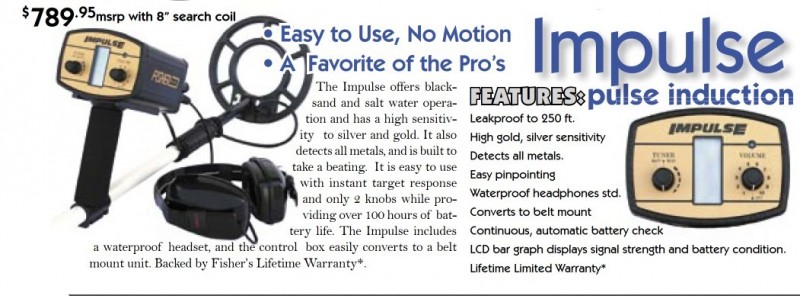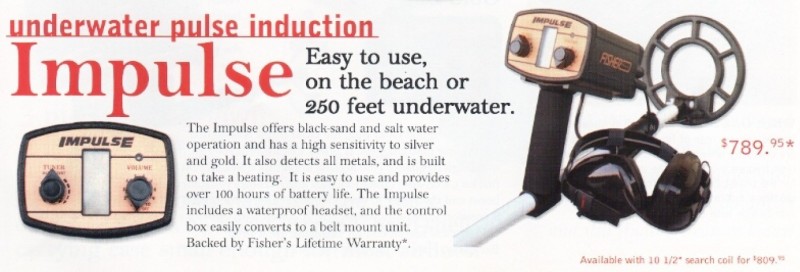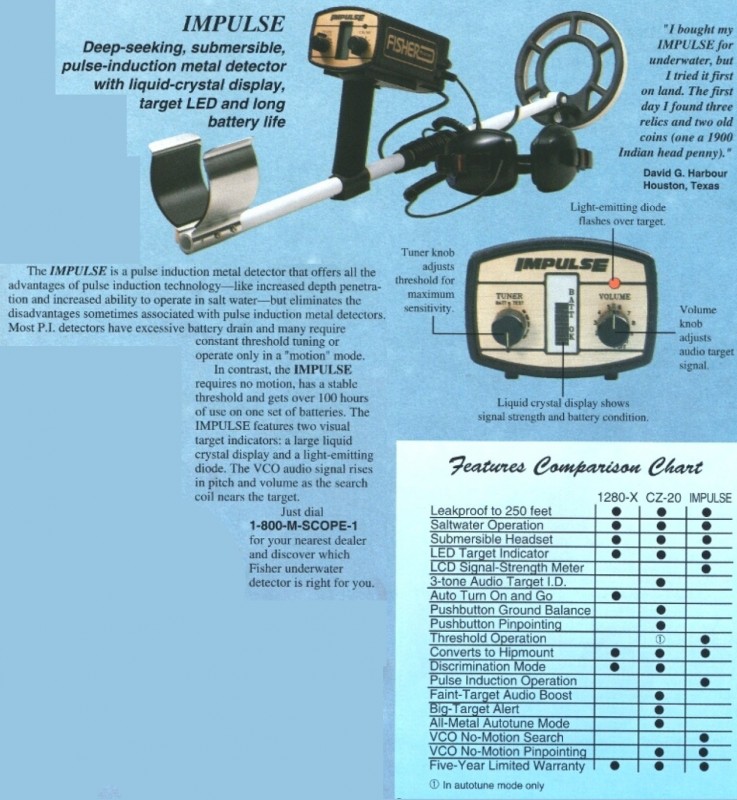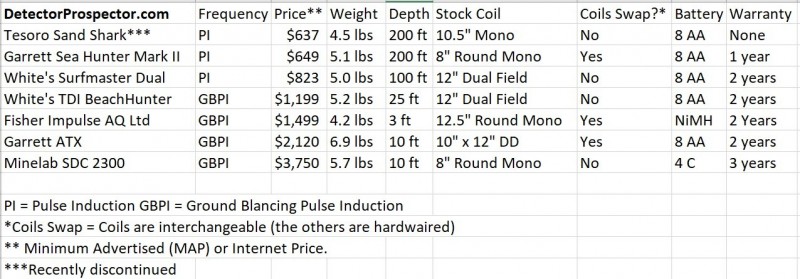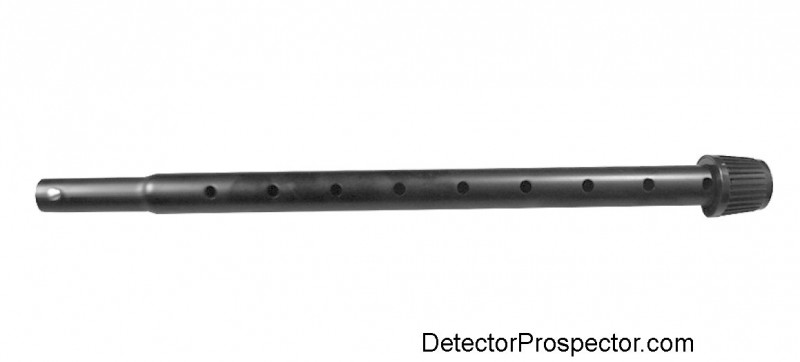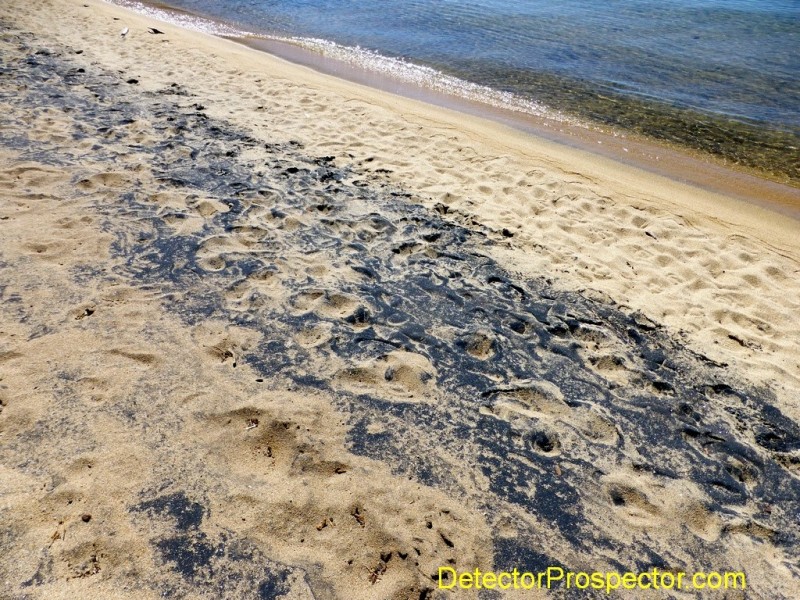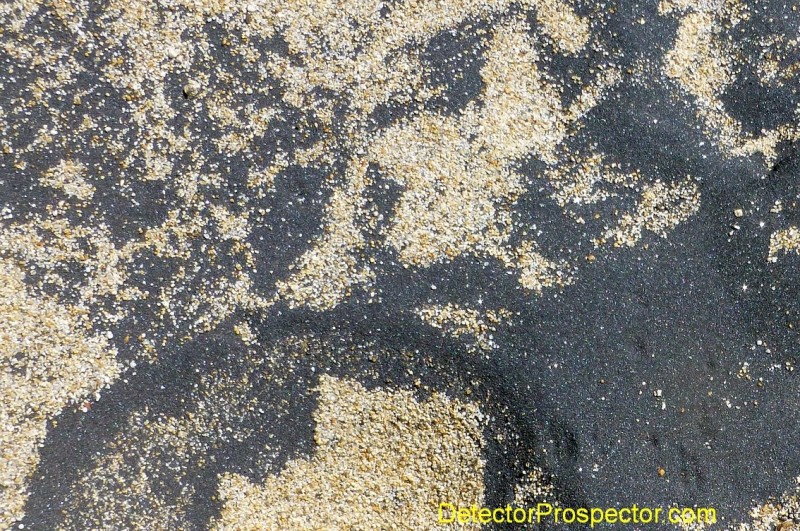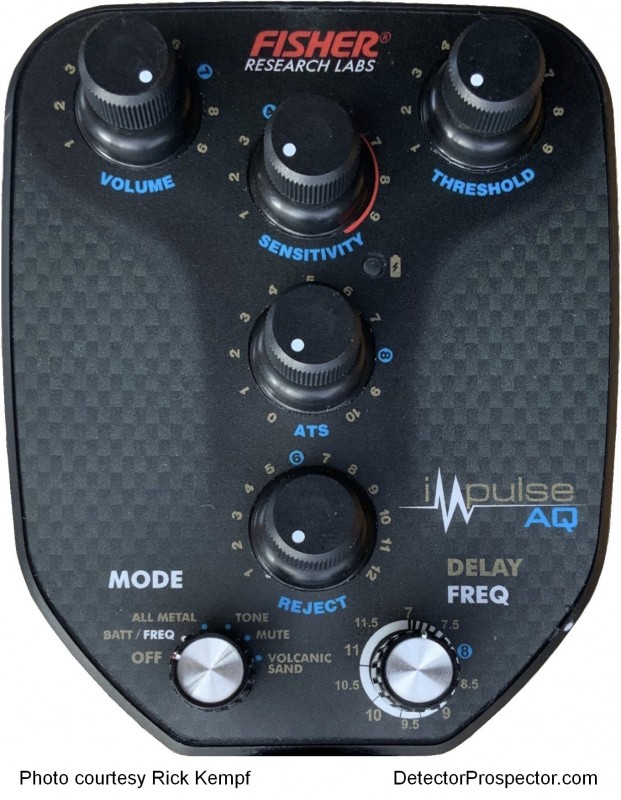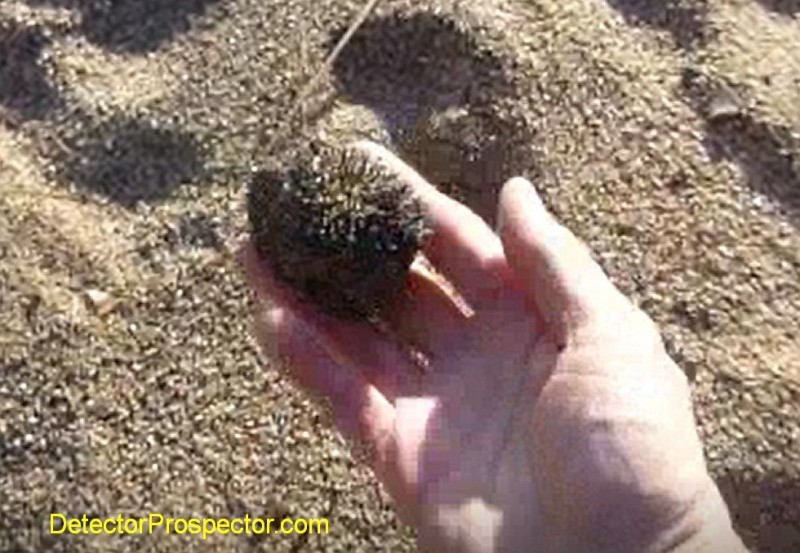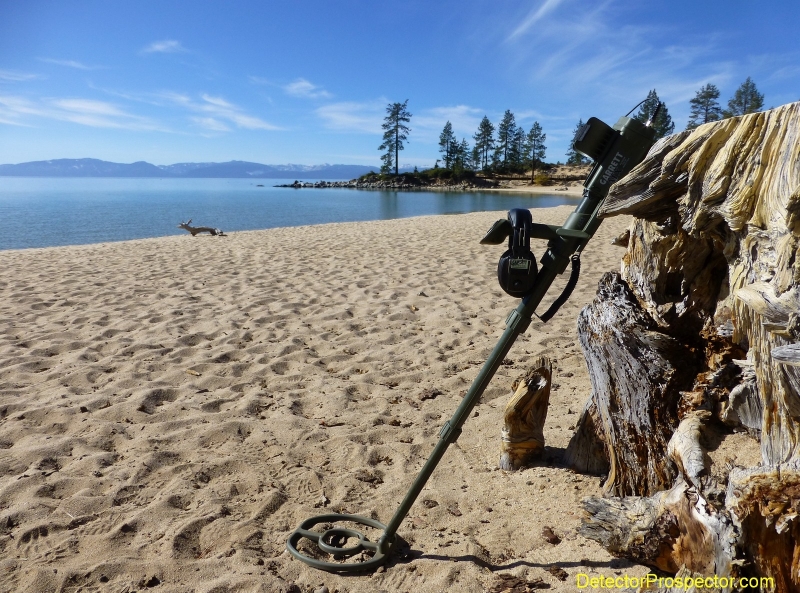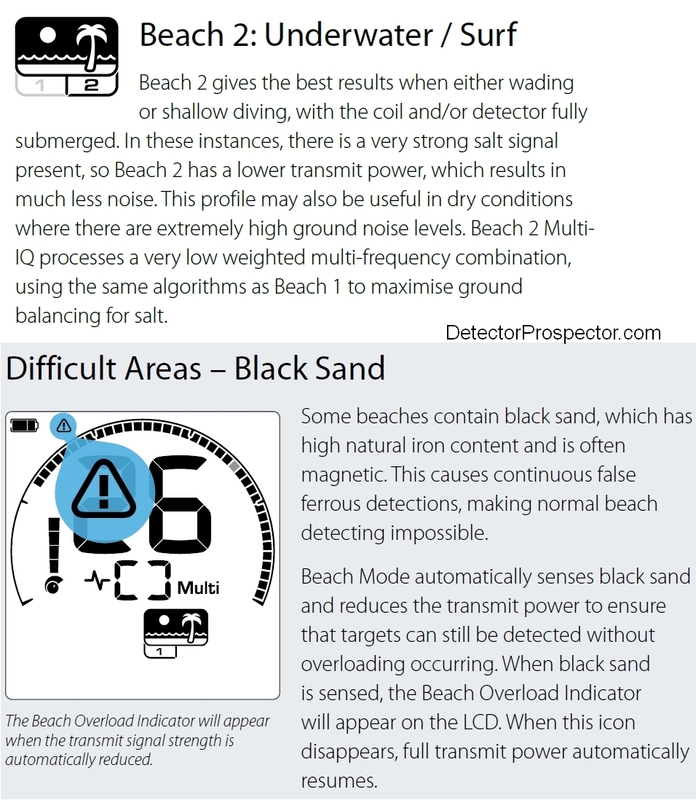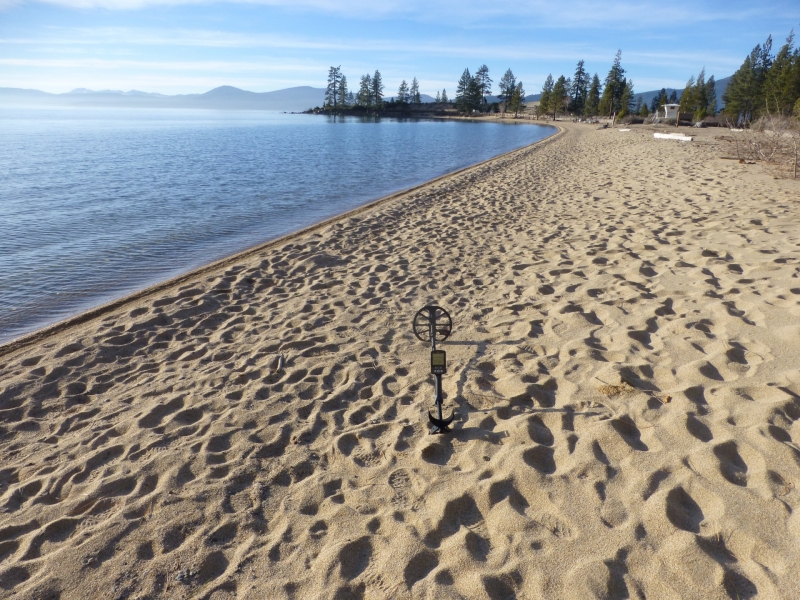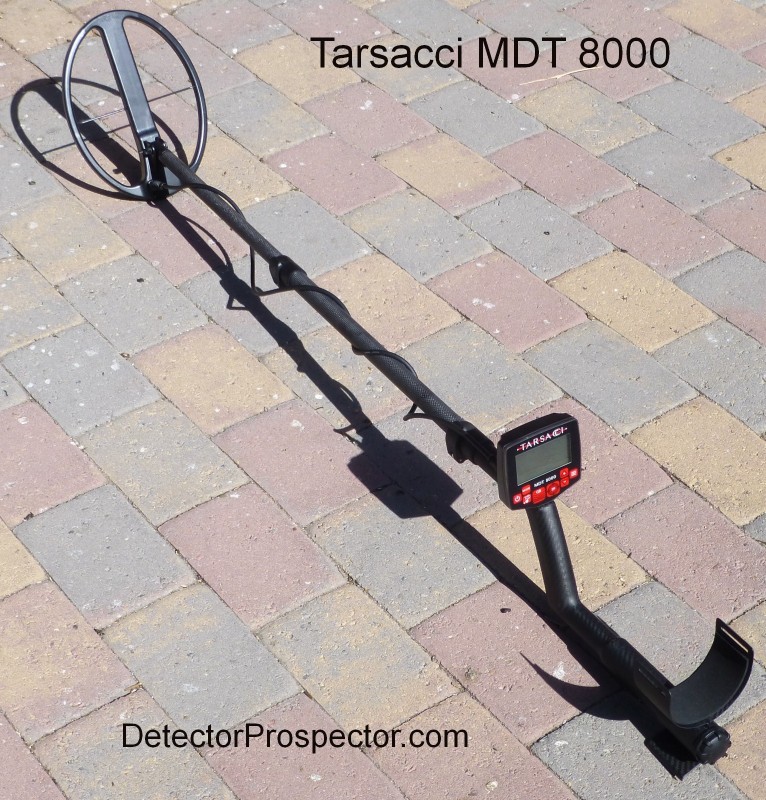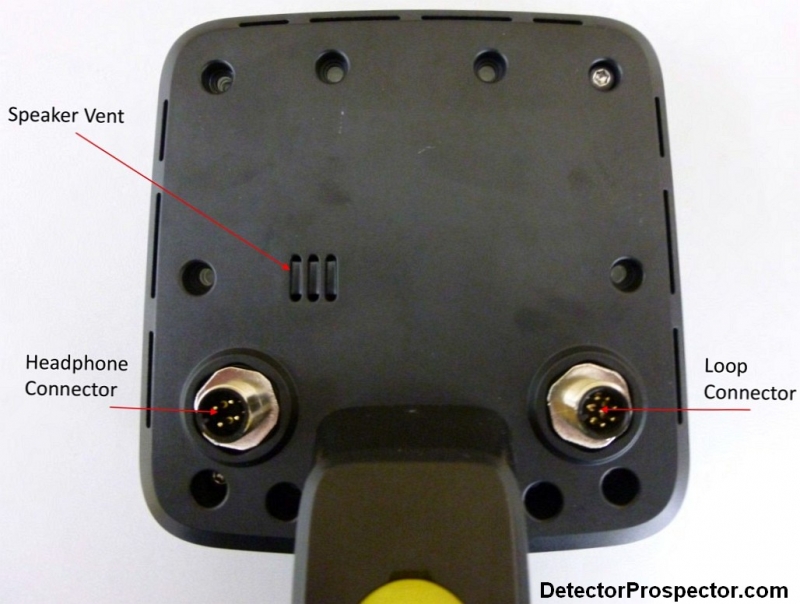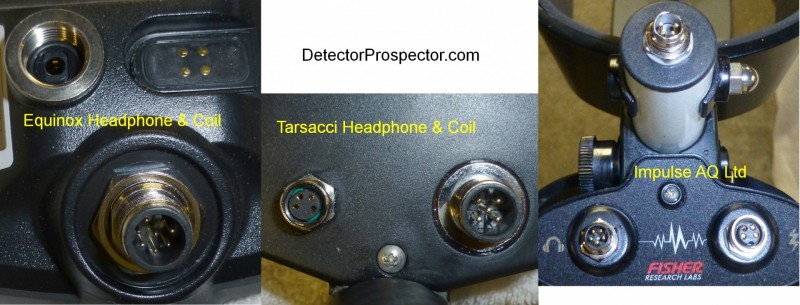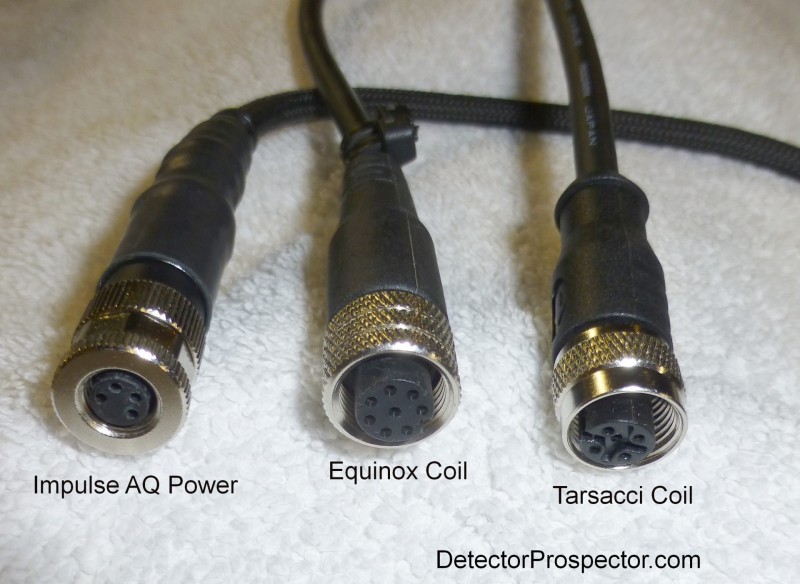-
Posts
19,773 -
Joined
Content Type
Forums
Detector Prospector Home
Detector Database
Downloads
Everything posted by Steve Herschbach
-
No, all prices on the internet are MAP (Minimum Advertised Price). MSRP (Manufacturer Suggested Retail Price) is the fake price everyone creates so everything can be on sale 365 days a year at the same price it always is. Illegal in many countries, but not here. Often also referred to as List Price. It does give cover for the few retailers who actually ask and get paid full MSRP by their customers, since technically it is the manufacturer recommended price. But you have to not be paying attention or desparate to pay MSRP for a detector. It's not like anybody is a bad guy for doing it. Everyone does it in the U.S. Everyone wants a sale price so everyone gets one! You can read the Garrett MAP policy halfway down this page. If you see somebody on the internet advertising new product well below MAP price, the odds are extremely high you are going to get ripped off. Legitimate dealers can't do it, and it is strictly enforced.... mainly by other dealers!
-
The original 1985 Fisher Impulse metal detector A note on saltwater. On dry land and in freshwater pulse induction (PI) detectors can be run to max limits. Not so in saltwater. There is an inherent limiting factor in saltwater that tends to flatten top end performance on all PI detectors, or even VLF detectors for that matter. The problem is simple - saltwater is conductive and so is visible to electromagnetic devices like metal detectors. Pulse induction detectors saw their earliest use as beach detectors because of the pulse delay control. Lower pulse delays expose items with a shorter time constant, and this usually means low conductive and/or small items. As the pulse delay increases a PI loses overall sensitivity. Early beach PI detectors all came with a preset, relatively high pulse delay that made saltwater invisible to the detector. In general somewhere around a pulse delay of 10 uS saltwater becomes visible to a PI detector. The number varies for several reasons, First, salinity varies greatly around the world, everything from salt free fresh water, all the way to the Great Salt Lake, which is water supersaturated with salt. Oceans and bays vary, and especially bays that have large river inflows, and therefore lower salinity levels. Large, shallow, enclosed bays with no rivers may act as evaporation dishes, and have abnormally high salinity levels. Further, this effect is accentuated the deeper you take a detector, and so detectors used for true SCUBA diving must be run at higher delay levels at depth. You can't just pick a number like 10 uS and say that is the magic number for dealing with saltwater. 9 uS may work well, or it may take 12 uS to eliminate feedback from the saltwater in your location. The coil detects like a globe in all directions, and so it is not just the water under the coil, but all around the coil that is affecting it. This large ball of saltwater is like a giant target. Many hunters riding the edge of sensitivity can tell you a detector can pick up waves as they pass over, making the water deeper. This long winded explanation is to make people realize that you can't just magically make the detector itself more powerful and get "more depth" or "more sensitivity." The salt range overlaps the tiny gold range, and so if you make a detector able to detect fine gold chains and tiny gold ear rings, it will detect the saltwater. If your set the pulse delay to eliminate the salt signal, you lose the tiny gold items. This is an inherent wall on both PI and VLF small gold performance in saltwater. We have had detectors for decades that can detect tiny gold that people say they want to detect in saltwater, the Fisher Gold Bug 2 for instance. The problem is the Gold Bug 2 will not work in a saltwater environment. The water is just a huge signal to a Gold Bug 2. I have gone round and round with people for the last twenty years trying to explain why you can't detect certain fine gold chains, small ear rings, small platinum, etc. in saltwater. The problem is not the detectors - it is the saltwater. The same problem exists to some degree on trying to detect larger items. You can make a very powerful detector, but you have to inhibit the detection of saltwater, and this tends to put a ceiling on the maximum attainable performance in saltwater. No matter the machine you use, once you hit the saltwater you can only advance the pulse delay and sensitivity controls to a certain point before the detector starts to protest. The exact settings where this occurs will vary by location. This all assumes "no mineral" sand. Add magnetic soil content to the beach or bottom being hunted, and you have yet another limiting factor to contend with. Add this all up and do not expect to run the Impulse AQ Limited at a pulse delay of 7 Us and maximum sensitivity in a typical saltwater environment. You will likely have to lower one or the other or both settings to get stable performance, and this requirement tends to be a limiting factor on all PI performance in saltwater. It is this knowledge that keeps me from ever expecting miracles to occur when I try new detectors in saltwater environment. The problem is not the detectors - it is the saltwater. The original 1985 Fisher Impulse metal detector
-
No EMI of consequence at the beach. However, my house is not EMI friendly at all, not just the house but the immediate area. The Equinox for instance is not happy in my yard. The Impulse is very EMI resistant, especially for a PI. I'd rate it better than the Equinox in that regard. I must admit the GPX question was not on my radar, since I am thinking waterproof competition like the Garrett ATX and White's TDI Beachhunter. Fully submersible pulse induction metal detectors It is however a terrific question on two levels. First, what about those people who only do very shallow wading at most and usually are on the beach, out of the water. How does the GPX fare in that regard? Well, I have not run a GPX in several years. Not being able to do direct depth testing I am going to fudge a little, but I think I can answer the question. On the negative side the GPX 5000 at $3999 is not an inexpensive option. The amount of money combined with the number of toggle switches make it a detector I'd just as soon not expose to salt air a lot. But it's only money and may be of no concern to many. The 5.3 lb weight on arm does not count the battery on harness normally required with GPX use, so obviously more heavy and cumbersome. The Impulse obviously wins on both price and ergonomics. On the plus side the GPX harnessed up properly is actually a joy to swing with large coils, and that battery has a very long life, up to a couple days of hunting. The GPX has an incredible array of accessory coils. The obvious cheat is to compare the GPX with a larger coil to the AQ with the 12.5" coil. Say anywhere from a 14" round up to 18" round mono, for example. While some may call this cheating, I call it common sense. I compare machines based on their most optimum setups one against the other, and if one detector can beat another due to a better coil, so be it. I'm not going to constrain myself with a false sense of fairness. when I'm looking for gold. The GPX and Impulse AQ I think are in the ballpark for raw performance, but for large beach detecting and for rings and coin size or larger targets the GPX would, I'm almost 100% certain, have the depth advantage if you use larger coils than are available for the Impulse. You also get the benefit of up to twice the ground coverage, a not inconsiderable when considering beaches of immense size. So for dry beach use I think the GPX still has a lot going for it, even if you assumed the performance between the two detectors was identical. Compared to the upcoming Impulse Gold, Fisher has an opportunity to get it right where Garrett failed completely. The Garrett ATX is an underrated performer compared to the GPX 5000. Yes the GPX 5000 has a performance edge, as it should for twice the price, but it is not as huge as people think. Garrett mainly failed by sticking a desert detector in an overpriced, heavy dive housing. The housing design also calls for coils with expensive rods attached, resulting in a limited and very expensive set of optional coils. To this day I think the ATX would have more into Minelabs pockets if Garrett had not came up with a design absolutely no desert prospector was requesting. If I was advising First Texas, I would recommend the final Impulse models have an internet price of not more than $1999. Working backwards that give us the stupid fake MSRP price of $2349 that manufacturers seem compelled to use in this country. I suspect the Impulse Gold will give the GPX 5000 a run for the money on performance. It does not have to beat it, though getting better small gold capability should be no great challenge. Let's assume the Impulse Gold beats the ATX at least, and if you read my report above at the link, you can see the space between an ATX and GPX is not vast. Is there a market for a 4.2 lb Impulse Gold at $1999 versus the 5.3 lb+ $3999 GPX 5000, assuming the performance exceeds the ATX and comes close to or equals the GPX? I definitely think so. Let's face it, even Minelab has moved on from the GPX now, so surely it is about time somebody at least catch up to Minelab on detectors they have been making for a long time now. My personal wish from First Texas is for a machine that basically duplicates SDC 2300 performance, without the warble, stays easy to operate, is more ergonomic, has accessory coils, and at about half the price of the $3799 SDC. I'd get that in a heartbeat.
-

How Are You Cleaning Your Gold?
Steve Herschbach replied to Swifty's topic in Detector Prospector Forum
More cleaning related threads -
Thanks. I’m a bit different I guess in that regard, in that I usually don’t refer to other people’s settings. Machines tell me where they want to be set... you just have to listen to what they are saying. I typically end up a little on the hot side as I can’t read what is going on when a detector is totally silent. My settings therefore usually end up a little noisier than most people prefer.
-
Would have been nice if the disc knocked them out but I was not expecting it. Sounds like the hair pin responses are what you are used to. Not sure about whether there is an audio tell on the bottle caps yet. At the moment I would say wire and bottle cap responses at default settings are similar to what most people expect from a PI. The reject function, as I very much anticipated, is not a magic bullet for all classes of troublesome targets. Unfortunately we are working not with conductivity or ferrous versus non-ferrous, but targets sorted by their time constants. The discrimination responses are not very dissimilar to what I would expect from a White's TDI with the ground balance control appropriately manipulated, but without near as much depth loss as I would anticipate with the TDI. More on other questions in a few hours.
-
I was there at 8 am opening. After an hour the beach was getting so busy I got in the water and hunted just off the beach. Water is cold still so only a few tough souls out in it, easy to work around. By noon the wind kicked up enough the waves were getting hard to see through and work in so I called it a day. They are running the parks at 50% capacity. The guy said on weekends they are “full” and closed to newcomers an hour after opening. First Texas Middle Rod section, current on many Fisher, BH, and Teknetics models. Will the rod too long for many people at the shortest settings so not a magic fix. This plus shortening the lower rod would be the best compromise, but I am sure FT was looking more for stability and integrity with the two piece rod design. Speaking of rods - we need a part number and price for replacement lower rods with yoke soon. You just know they are going to get broken, and the unique design means no easy fixes.
-
Short answer, the Impulse AQ is the real deal. Advice to Tom Walsh - put all resources necessary into getting the full retail version approved for sale ASAP. I will not be hunting saltwater with the Impulse in the near future but instead local freshwater lakes. The coast is farther than I want to drive for now. Lake Tahoe is a freshwater lake, with beaches made up from material derived from granitic rock. It is a very large lake, with 72 miles of shoreline. Most beaches are pebble beaches. Sand Harbor is a one of the rare sandy beaches on the lake. The sand is heavily laced with magnetite that will greatly inhibit or overload and shut down most VLF detectors. Metamorphic and volcanic hot rocks are also fairly common on the lake. https://www.earthmagazine.org/article/travels-geology-lake-tahoe-jewel-sierra-nevada Black sand (magnetite) layers exposed on beach Closeup of magnetite black sand. Note dark gun metal granular nature of the sand. Highly magnetic. This is a magnet that has been dropped onto the sand and picked back up - a golf ball size lump of magnetite. Most of the soils in my area have a high magnetic component, and most VLF detectors get roughly 60% of the depth normally quoted on most U.S. forums. A ten inch dime here is a bit of a joke... more like 5-6 inches. This beach is particularly bad, and will send the Equinox into almost continuous Beach overload mode. Other modes have to have sensitivity drastically reduced or the machine basically shuts down. Despite this beach having thick magnetite concentrations I had no problem running the machine at 7 uS pulse delay, full sensitivity. I used the default marked settings for other controls. The detector is extremely stable, with rock solid audio. This machine will have me digging as deep as I care to dig. I've almost bit on a TDI Beachhunter a couple times in the last year, and am glad now I did not. This is the detector White's could have made if they had not basically stopped trying to advance the TDI in a meaningful way. There is only one thing about this machine I did not like to the point of needing to do something about it. At 5' 11" the two piece rod is too short for my liking, like by a couple inches. I had to keep the coil a foot ahead of my feet and was still bent over. Thankfully I just found that the middle section out of a standard Fisher three piece rod (I have one in my pile of stuff) plugs nicely into the gap, and will give me that extra reach I need. The power cable sticking out of the back makes it difficult to find a way to prop the detector against my side or hip without stressing the cable while digging. I need to rig a bungee so I can just let it hang by my side while digging. The coil is not as heavy as it looks, and swings quite nicely above the water. Swinging the 12.5" coil underwater however is a bit like swinging through molasses. I'm fine with it but may be a bit much for some, especially in running water. The coil is just ever so slightly buoyant. Not so much as you notice it while swinging - it feels neutral. But if released sitting in the water the coil slowly floats to the surface. It would take only a very small amount of counterweight to make it negative instead of positive buoyant. The coil has no scuff cover, just an exposed epoxy bottom. No word yet on when scuff covers will be available. I like the headphones, very familiar feel to many I've used gold nugget detecting. Snug fit, maybe too snug for some people but good for my not huge head. Good sound exclusion, and plenty of volume for above water use. As in I was running volume 3-4, but I do keep volume low to protect my hearing. How well they work underwater I am unsure but I suspect as well or better than most competitors. The cable has plenty of length, but is not particularly robust looking, and I will probably tie it off on the armrest or someplace to keep from stressing the cable too much near the plug. This detectors Achilles Heel should not surprise PI users - wire and bottle caps. Forget videos seeing rings while rejecting nails... not a ton of nails on most beaches. Show me a video of a ring buried in sand surrounded by hair pins and wire tie wraps plus a few bottle caps. Yup, it's still a PI. That said, anyone who is a PI hunter and likes PI detecting... I think you will like this detector. I'm thrilled with it. Tons of stable power. It will probably need to be dialed back on pulse delay or sensitivity or both in salt water, but once set just under whatever salt threshold is required this machine will deliver the goods. The audio is great. I easily found myself able to start cherry picking deeper "round" signals. The reject setting is most effective as a way to not waste time on dimes or quarters and some large ferrous. The wire and hairpins tend to be shallow and sharp, the deep targets easily discerned with a more centered, marginally softer signal. The coil has the classic double blip on shallow targets as they pass under each edge. This edge coil sensitivity is extremely important. Not only does it quickly identify small surface targets, but it is a great aid in pinpointing. Get the target out of the hole and turn he coil on edge, and quickly locate the item in a pile of sand. Those surface targets are also quickly isolated for a quick scoop and recovery. Fisher Impulse AQ Limited controls The default reject breaks at shiny clean copper coated zinc pennies. They and dimes, quarters, and I assume copper pennies read low tone. Nickels and corroded zinc pennies (ate through the copper) read high tone good, as they should. So the default break is between new clean zinc pennies (low tone) and corroded zinc pennies (high tone). Side note: digging low tones in a park for coins may be fun to try. The Reject control surprisingly seems to have less impact on disc results than the ATS control. ATS at zero basically means no disc no matter where the reject setting is. At the default reject setting of 6 corroded zinc reads good, and advancing the control to max changes nothing. But advancing the ATS control from default 8 to 8.5 flips the corroded zinc to a low tone. And also my gold wedding ring. I left the ATS and Reject at defaults (see photo) as they seemed best... as they should be. The Tone setting does not appear to cost much depth - the 10% quoted by Alexandre seems to be in the ballpark. You can hunt all metal and use a couple tricks. First, you can switch to Tone to check for the coins listed above or large ferrous. Second, if you are dealing with foil, the Pulse Delay control rotates continuously, so you can switch right from 7 uS to 11.5 uS. Foils drops out a lot more than rings, but so will small gold items. Still, a handy thing if you are looking for rings. But I thought running in Tone mode directly was a pretty fine way to go for what I was doing. The machine does not lack for depth even when you give a little up. The Fisher Impulse AQ is made to find rings. I actually am very impressed with the small item capability on dry sand or in freshwater... it will hit tiny stuff just fine and I think finding gold nuggets will not be too much of a challenge with the AQ. But it is really made as a ring finder. I am certain I can cherry pick ring signals with this machine. I found no rings, but dug nickels and corroded zinc at depth and with audio that was easy to discern to my admittedly trained PI ear. I messed with quite a few shallow targets just to confirm most were wire and hairpins. Usually a sharp signal under each edge of the coil. Well, folks, as I suspected it is not a magic wand. However, this PI guy is extremely pleased with this detector. Basically I just have to extend the rod, rig a bungee so I can drop the detector without it hitting the ground, and I'm good to go. I actually like hunting in tones... it adds more audio tells and I really do not mind passing on a lot of coins. I'll worry about maximizing depth later when I run out of beaches and targets. Mainly I need to get my eyes healed up to where I can really deal with water more effectively. Right now shallow wading and cherry picking will suit me just fine. That's most of it. I'm not going to take time to do any proving of anything. Those of you who know me or who have followed my posts for a couple decades know I'm not a BSer. There is not one review I have done in the last twenty-five years I think was off base or that I would change, and they are all still out there to prove it. If you are a serious PI hunter you are probably going to want one of these, though most people are going to want the improved battery/deeper depth rating version. I'm sure I'll be in line for one of the first when they are available. All you folks who have never used a PI and expecting a PI with VLF type discrimination? Well no, this is a PI and it is just a whole different ballgame. You get these things for depth, and most especially depth in difficult conditions where VLFs lose a lot of depth. “Deeper“ is a one dimensional way of looking at metal detecting. My goal is to be more efficient and to locate more “good” targets per hour of metal detecting. The Fisher Impulse AQ offers great ergonomics, superb audio, an advanced discrimination system (for a PI), allowing focus on ring type targets, and as much power as the hunting environment will allow. It’s not just “more depth”, though the AQ has as much as is possible, but the total package that matters to me. When it comes to the total package, including depth, the Impulse AQ delivers. 👍🏼 All Fisher needs to do now is get the full retail version, with improved batteries and depth rating, on the market so people anywhere can buy one. I hope that happens by the end of the year. Sand Harbor by noon - social distancing at its finest!
-

Airline Travel With A Metal Detector
Steve Herschbach replied to donP's topic in Metal Detector Advice & Comparisons
I never use special cases when traveling. Thief magnets as far as I am concerned. I just wrap the detector in a towel and pack it in my regular luggage. Or if I have too much detector gear, I have an old beat up Samsonite suitcase I keep specifically for that use. Most places don’t care about people detecting, but some might run you off unless you are staying there. But I’ve never had a problem. I’m always in early and gone before crowds build. I don’t like getting near people at all, whereas I’ve seen some detectorists practically hunt to a person‘s towel or under their chair while they are sitting there! Good way to cause complaints and get booted. -
I will not be hunting saltwater with the Impulse in the near future but instead local freshwater lakes. The coast is farther than I want to drive for now. Lake Tahoe is a freshwater lake, with beaches made up from material derived from granitic rock. It is a very large lake, with 72 miles of shoreline. Most beaches are pebble beaches. Sand Harbor is a one of the rare sandy beaches on the lake. The sand is heavily laced with magnetite that will greatly inhibit or overload and shut down most VLF detectors. Metamorphic and volcanic hot rocks are also fairly common on the lake. https://www.earthmagazine.org/article/travels-geology-lake-tahoe-jewel-sierra-nevada Black sand (magnetite) layers exposed on beach Closeup of magnetite black sand. Note dark gun metal granular nature of the sand. Highly magnetic. This is a magnet that has been dropped onto the sand and picked back up - a golf ball size lump of magnetite. Most of the soils in my area have a high magnetic component, and most VLF detectors get roughly 60% of the depth normally quoted on most U.S. forums. A ten inch dime here is a bit of a joke... more like 5-6 inches. This beach is particularly bad, and will send the Equinox into almost continuous Beach overload mode. Other modes have to have sensitivity drastically reduced or the machine basically shuts down. Difficult Areas – Black SandSome beaches contain black sand, which has high natural iron content and is often magnetic. This causes continuous false ferrous detections, making normal beach detecting impossible. Beach Mode automatically senses black sand and reduces the transmit power to ensure that targets can still be detected without overloading occurring. When black sand is sensed, the Beach Overload Indicator will appear on the LCD. When this icon disappears, full transmit power automatically resumes.
-

Desi Dunne Of Minelab Fame Has Passed Away
Steve Herschbach replied to Sven1's topic in Minelab Metal Detectors
I’m sorry to hear that... Rest In Peace Des, and my condolences to family and friends. https://rip.ie/death-notice/desmond-des-dunne-ballincollig-cork/425931 -

Low Weighted Multi Vs 5/10 Khz To Avoid Tiny Targets
Steve Herschbach replied to Argyris's topic in Minelab Equinox Forum
This thread explains what is going on, and has a great video that shows it. https://www.detectorprospector.com/forums/topic/3030-iron-audio-on-vlf-detector/?tab=comments#comment-34132 -
If I find anything it will be accidental. But then that’s how a lot of my beach detecting goes. I will hit the dry beach first before things get busy. Want to get used to machine responses on dry land. I’ll hunt all metal, then cross check in disc mode. Dig everything. Run first battery dead. Beach should be getting busy by then, will switch to water. I’ve hunted Sand Harbor a few times before, only found one decent ring there so far so not expecting anything amazing. Most of it is bottomless sand. I’m more interested in how the machine runs and sounds, how it handles the black sand and hot rocks, etc., than anything else, so will be spending more time analyzing targets than would be my norm. But hey, you never know, might get lucky... that’s beach hunting. Tahoe even when it is warm is pretty cool water. The rich folks with the serious bling tend to head for warmer water. I’ve seen quite a selection of Tahoe gold found by others, and gems are very rare. Mostly more plain common gold jewelry, the kind a younger crowd would wear. And unfortunately the younger folks these days are not wearing gold jewelry as much as they used to.
-
Might want to review existing threads, tons of information. Short story is this is the wader version, to be followed by a dive version with drop in batteries and a depth rating up to and probably exceeding 10 feet. The external battery and cable will be eliminated. The price will also be higher. Maybe by year end, but remember, this is First Texas... which year are we talking about?! Replaced does not mean if you buy the Limited now that it will get replaced at no cost with the newer version. There is no upgrade credit at all. You can possibly buy this one or you can buy the next one, or like me you might buy both. This version is limited to no more than 99 units, and will be replaced by the newer model after that. Hopefully that makes it clear. Honestly, unless you just have to have one like right now, the final version will be the one most people are going to want and be most satisfied with. For me it seriously is a matter of actually wanting a wader version at a lower price. If they said it was only waterproof to the control box I’d be fine. Ready to go in the morning, fired the unit up, waved a couple items under the coil - sounds sweet! Remarkably EMI resistant for a PI. Better than some VLFs.
-

Low Weighted Multi Vs 5/10 Khz To Avoid Tiny Targets
Steve Herschbach replied to Argyris's topic in Minelab Equinox Forum
Just remember that the F2 setting of 0 applies less iron bias than normal iron bias setting of 0, which is equivalent of F2 setting of about 4. The normal F2 default setting of 6 is higher than regular mode default setting of 6, so no surprise you don't like it. -
All the talk about how the MDT 8000 does extracting non-ferrous from highly mineralized ground littered with ferrous trash made me decide I needed to try one out for gold nugget detecting. The detector arrived and I have to say it is a nice piece of work. The all carbon rod design adds a real touch of both quality and class. Very good looking, sturdy detector, that feels real good in my hand and on my arm. The machine ships packed inside a real nice custom rucksack. Another nice touch is including two rechargeable batteries, one for use, one for backup. However, the battery can be inserted either way, and there in nothing on the detector to indicate which way to go. I assumed it was polarity protected, but I've made that mistake in the past and did not want to risk it. The is no manual included, so I checked the online manual, and not a peep there at all about batteries. So I fired off an email and got a prompt reply - positive down, and yes, polarity protected. I plan on getting this out for a first nugget hunt in about ten days, so will see how it goes. I have several locations that I want to try in the desert and mountains so it my be a bit however before I come to any conclusions. Final note - kudos to Tarsacci for including the a waterproof to 1/8” headphone adapter. Headphone adapter dongle should be mandatory for anyone selling an underwater headphone with removable headphones. This will make it a snap for me to adapt the machine for wireless headphone use by employing my TaoTronics Bluetooth low-latency transmitter box.
-
We do not know that it means that exactly. Until it gets thoroughly tested it is an open question. But definitely being soft sold at the moment versus a year ago. Frankly, a top performing PI that could be switched to getting any kind of halfway decent disc is a big advance, and beats running to get a second detector. Right now your PI disc options are the White's TDI Beachunter tones, or the Garrett ATX ferrous function. The Garrett feature is functional at shallow depth only... I relied on tones instead, much like one would do with the TDI. Whatever... I'll figure it out. Alexandre was kind enough to offer a Skype session with him and Willy to explain any questions I might have, but frankly once I have a detector in hand I have all the answers I need at my fingertips. Ultimately with detectors I only trust my own use to tell me things I need to know. I just need a little time to see how it goes. The disc may not have much if any depth advantage versus, say, a CTX 3030 with a 17" coil on white Florida sand. The very same disc might slay the CTX on a black sand laden volcanic island beach. Location rules all, and generalities are just that.
-

Connector Confusion
Steve Herschbach replied to Steve Herschbach's topic in First Texas - Bounty Hunter, Fisher & Teknetics
Unless somebody can locate a 5 pin M8 to 1/4” adapter off the shelf we either make them, or somebody here makes up 20 and starts selling them. Four detector models, four different headphone connectors. And Garrett is also different. Garrett, Minelab, and White’s have 1/4” adapters, but they are no good to us. Thanks manufacturers for the standardization... not! I’ll be going wireless so best get to work making an adapter.- 3 replies
-
- minelab equinox
- tarsacci
-
(and 1 more)
Tagged with:
-
That is common with lakes in many states as far as property lines. If the lake gets lower your property gets bigger. But usually once in the water there is more free play. People normally can anchor a boat offshore and you can’t yell at them for being on your property. Wading and such probably varies by jurisdiction and local practice.
-

Low Weighted Multi Vs 5/10 Khz To Avoid Tiny Targets
Steve Herschbach replied to Argyris's topic in Minelab Equinox Forum
First off, I have to say I’m very impressed by the depth of thought being applied to this subject! I feel rather inadequate by comparison. When I started with Equinox there was no iron bias. My only real issue was with flat tin type steel in old mining camps. Decomposed rusted cans. Then Minelab added iron bias. I tried it set to max on the flat steel... not a bit of help. Ever since I have set iron bias at 0, or if I forget, leave it at default for whatever mode I select, which is often Park 1. Can’t say it makes any real difference in my detecting either way most of the time, other than nugget detecting, where I try to make sure it is set to zero. The tells I get between running full tones and paying attention to 39 spikes seem to be sufficient for me as I almost never dig ferrous objects. BI do dig some bottle caps, but not tons of them, and usually shallow plated or foil wrapped ones, which are not true ferrous targets anyway. I hate to say it, but since the F2 setting came out I’ve pretty much ignored it. Just never got around to playing with it. I tell myself I should be going to F2 setting of 0, but generally forget when I hit the field. It truly is a case of “if it ain’t broke, don’t fix it” and in general ferrous is just not an issue for me and Equinox. I’ve really not nugget hunted with Equinox but once since F2 came out, and need to remember to go to F2 0 next time I give it a go. You never want to give tiny gold a chance to read ferrous... it wants to do that enough already. Blah, blah, blah... just really posted to say don’t read too much into manuals. All the statement in the manual is saying is that if you are in a lot of ferrous and want it to shut up, use a higher iron bias. If you don’t want to miss non-ferrous targets, lower it. Yeah, it was poor use of the word “mask.” 🤷♂️ -
I have seen people question why the waterproof rating of the Fisher Impulse AQ Limited is only 3 feet if it uses the same connectors as the Minelab Equinox. Well, it does not. The Tarsacci uses a mix of connectors, and has the same M8 size headphone connector as the Impulse, but 4 pin instead of 5 pin. The Tarsacci coil connection is larger, same size as used on Equinox and MX Sport. The Tarsacci is rated IP68 (Up to 1.5 meters for up to 30 minutes). That's it, thirty minutes. So the Tarsacci is really only a shallow wading machine also. The Equinox has no M8 connnectors but instead a pain in the butt proprietary headphone connector. Now maybe we know why. The Impulse power connector on the battery is the same 4 pin connection Tarsacci uses for headphones. The Impulse headphone connection is 5 pin. Go figure. The White's MX Sport / GMX connectors are very similar to the Equinox, coil identical, headphone 4 pin. The White’s connectors look like the best of the bunch in my opinion. Looks like what Fisher should have used instead of the smaller connectors. To sum up, Impulse AQ Limited power and headphone plus Tarsacci headphone only are M8. All others are M12. Click or double click for high resolution photos.... Impulse AQ Ltd power compared to Equinox and Tarsacci coil Detector connections, Equinox, Tarsacci, & Impulse AQ Limited White's MX Sport connectors
- 3 replies
-
- minelab equinox
- tarsacci
-
(and 1 more)
Tagged with:


